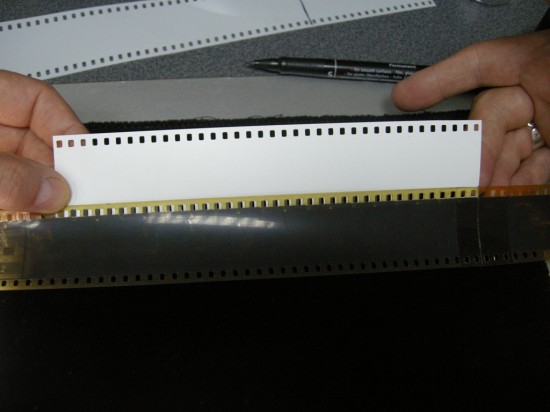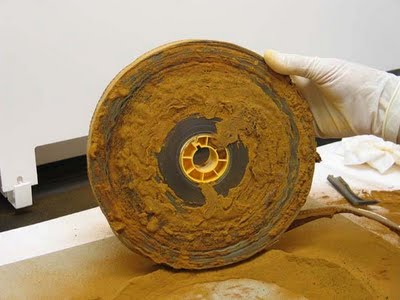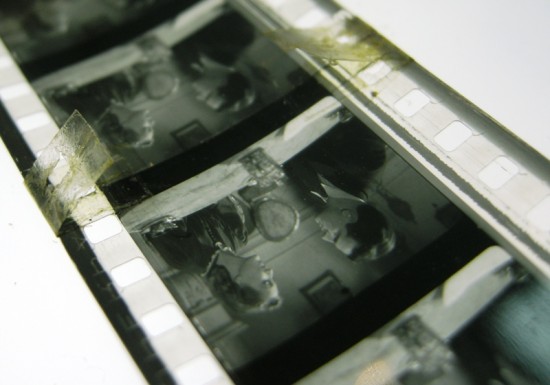
Physicochemical damage can be caused by both internal and external factors. Internal factors include the mutual effect of the materials of which film was made, whereas the external conditions embrace the impact of atmospheric conditions, air pollution, or recycled materials, e.g. scotch tapes used for repair.
TEMPERATURE AND AIR HUMIDITY
![]()
With high temperature and low air humidity, film stock loses resilience and mechanical durability. Fluctuations in the amount of water lead to the shrinking or expanding of the carrier. Shrinking occurs in all directions, changing the length and width of the base as well as the distance between perforation holes. Unlike temporary deformation, shrinking of film is an irreversible phenomenon. A copy that shrank beyond 1% is unsuitable for screening, because when posed on the projector, it breaks or slips from toothed rolls and transporting drums.
 |
| Shrinking of film phot. Monika Supruniuk |
CHEMICAL INSTABILITY OF NITROCELLULOSE
![]()
Chemically resembling guncotton, nitrocellulose contains a smaller amount of silver nitrate in one particle and is not explosive, but nevertheless highly inflammable. NITRATE base decomposes in an ongoing manner, releasing harmful gases such as nitric oxide and dioxide.
Autocatalytic decomposition, which takes place in the course of the ageing of nitrocellulose, is particularly dangerous, since the degree of degradation is not proportional to the age of the film and it is hard to prevent.
NITRATE base is composed of a mix of collodion cotton or colloxyline, containing ca. 12% of nitrogen. Cellulose esters are vulnerable to the disintegration of long bonds. Side products of the reaction are acidic, which stimulates the degradation of the base.
Decomposition of film materials made on the basis of nitrocellulose can be divided into five stages.
- Film of a delicate amber colour. Metal case subject to corrosion. Film materials give out a weak smell.
- Image fading. Coils of film get glued together. Film materials give out a weak smell.
- Emulsion becomes soft and sticky. Materials give out a strong pungent smell. Discernible yellow gas bubbles.
- Layer of emulsion together with the base become soft. Coils get glued together forming a packed mass. Roll surface is covered with light foam. Film materials give out a very pungent smell.
- Film is subject to partial or total decomposition.

from: http://hooverinstitutionla.blogspot.com/2009_09_01_archive.html
SELF-ADHESIVE TAPES
![]()
In the course of time, self-adhesive tapes, formerly used for repairs, were subject to discoloration, lost their adhesive properties and durability. Plasticisers in the glue were subject to decomposition, film turned yellow and crumbled. The glue of self-adhesive tape contained acidic ingredients, which had an unfavourable effect on the emulsion layer.

U kresu drogi (1939), phot. Monika Supruniuk















